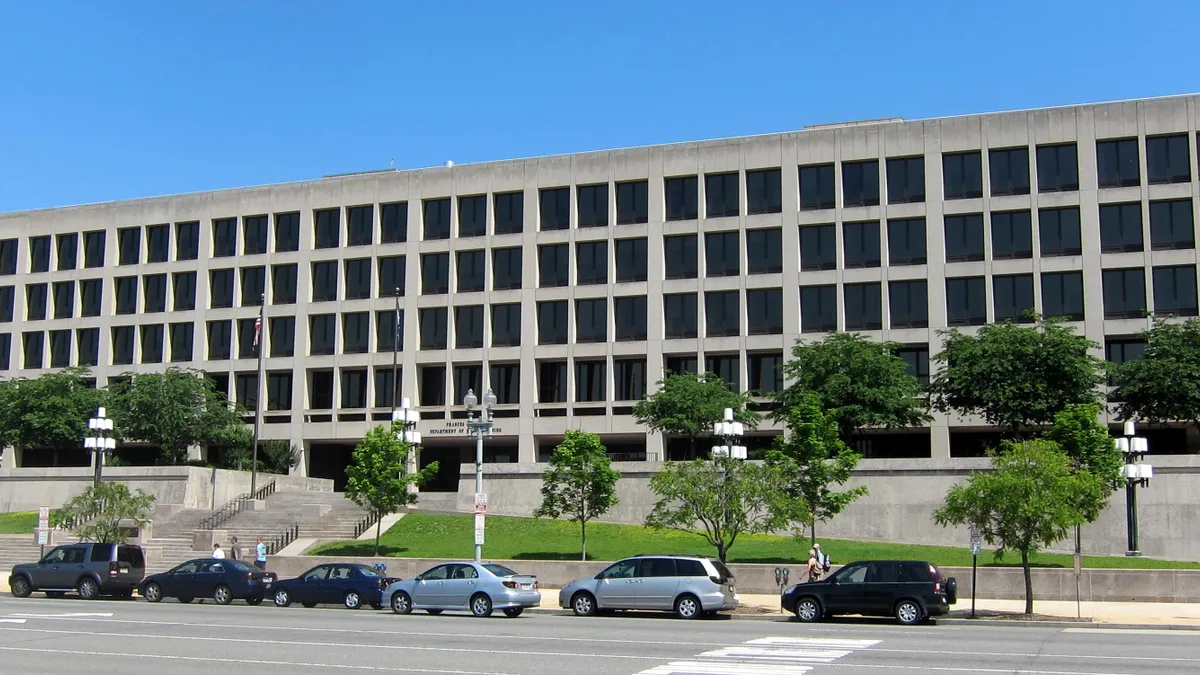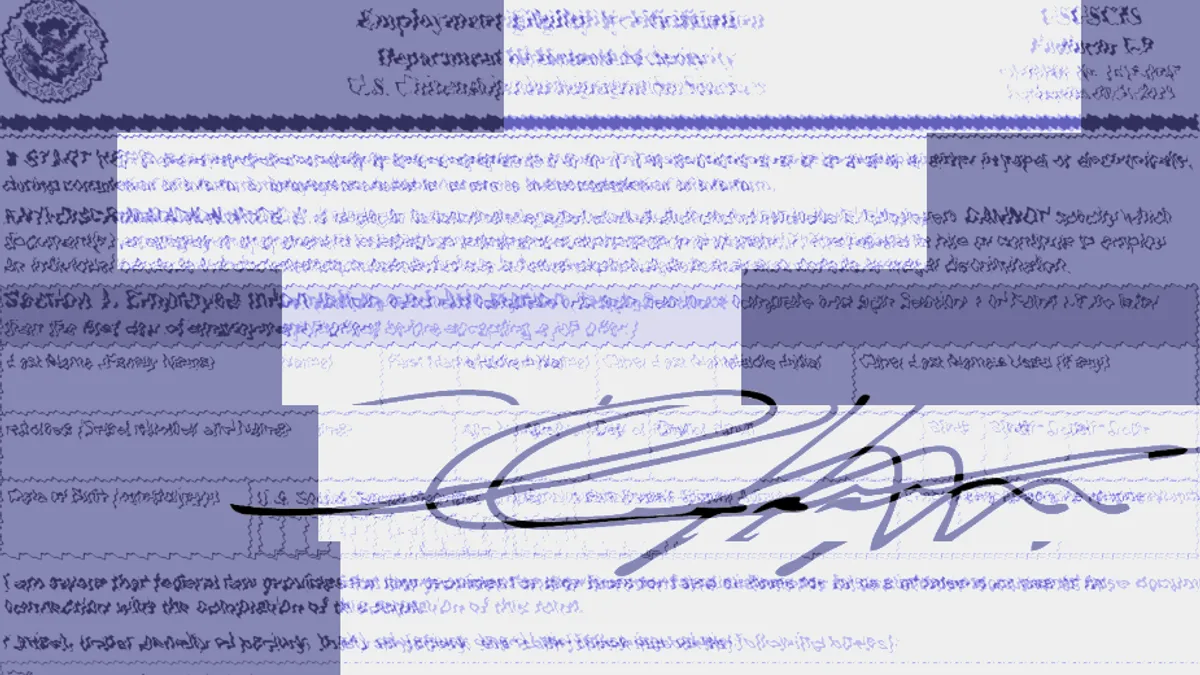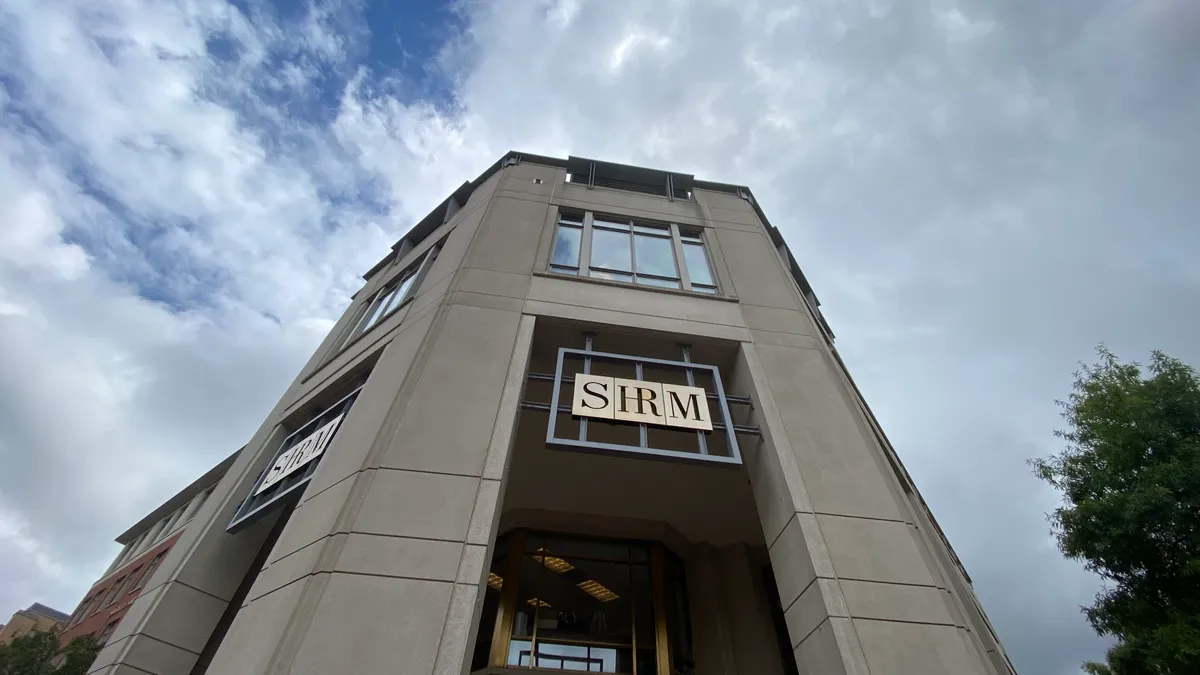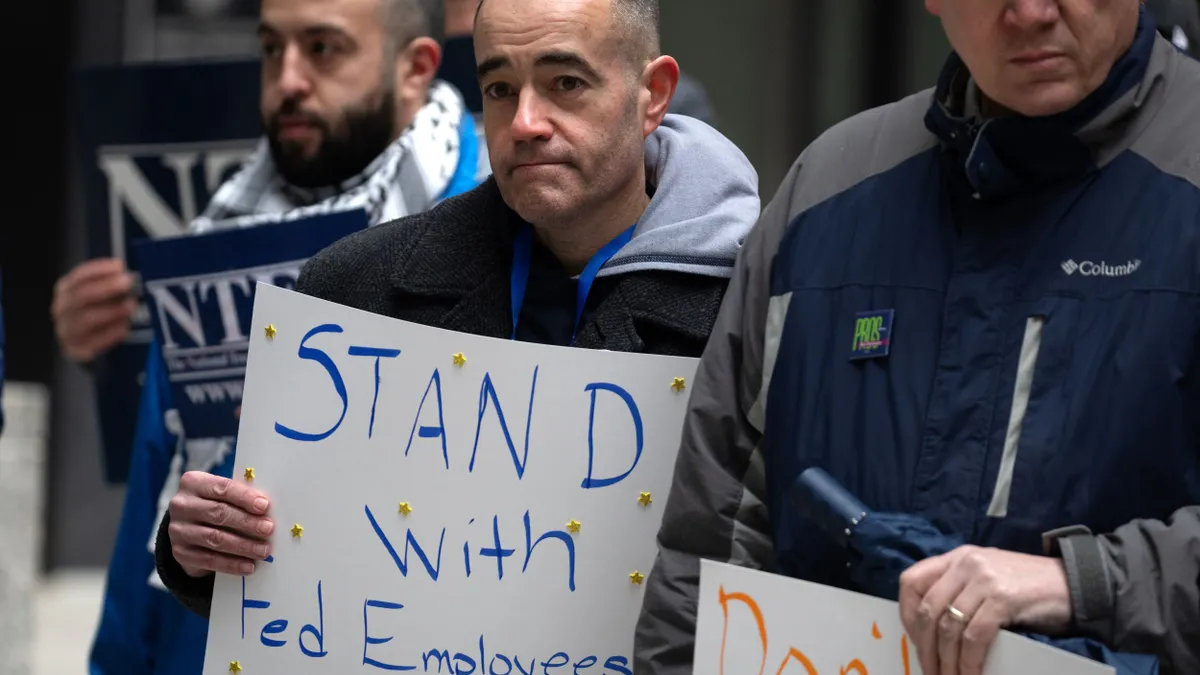With no one in charge at the U.S. Department of Labor’s Wage and Hour Division (WHD), employers are in a holding pattern with respect to several outstanding issues, most notably new overtime regulations.
And relief probably won’t come any time soon. President Trump has yet to name a WHD administrator and even once he does, the nominee will require Senate confirmation. Someone could be installed this year, but the process could potentially spill into 2018, experts say.
There certainly have been hints about how some issues may play out, however, and most seem to point to good news for employers.
Weighing education against enforcement
In general, employers can expect to see WHD (if not the entire DOL) shift its focus from enforcement to education, according to Alfred B. Robinson, Jr., a shareholder in Ogletree Deakins’ D.C. office.
Robinson, who served as acting WHD administrator under President George W. Bush, told HR Dive he believes the division will start to look like it did during that time: aiming for a balance of both enforcement and education (referred to as “compliance assistance” at DOL).
A 'change in tone'
Robinson said his prediction is based on a few early actions, including the rescission of some Obama-era policies and the reintroduction of opinion letters. And the shift is already evident in WHD’s press releases.
“I think there’s a subtle and maybe not so subtle … change in the tone in some of the press releases where it’s not just enforcement and penalizing,” Robinson said. Instead, WHD is already touting how it helps employers right wrongs and prevent future violations. “That’s another indication that we’re going to see a more balanced approach and not one heavily tilted toward enforcement and penalties.”
For Robinson, now a management-side employment law attorney, that’s welcome news. “By and large, the overwhelming majority of employers want to comply with the law,” he said. And while the government needs the threat of enforcement actions in its tool belt, employers also need help with compliance, according to Robinson.
To that end, Robinson says employers may see enforcement actions focus on making aggrieved employees whole, rather than damages designed to punish employers. “You have a small percentage of employers who want to circumvent the law,” and those are the businesses for whom penalties like liquidated damages should be reserved, he said. “In past administrations, they were assessed quite frequently and, quite frankly, I don’t think that’s the intent of liquidated damages."
Congress didn’t mean for them to be assessed for every violation; they’re to penalize employers who are deliberately breaking the law, he said.
Strategic enforcement sticking around?
Another Obama-era favorite — “strategic enforcement” — could be sticking around, however. In 2010, WHD’s then-administrator David Weil explained that DOL’s enforcement needed to change to keep up with a rapidly evolving workforce. As employment relationships morphed and unionization declined, WHD found that its “workplace-focused” approach was less effective. In response, Weil advocated for a focus on certain industries and geographical areas.
Robinson said he doubts that strategic enforcement will disappear entirely, as WHD’s resources are limited. If it finds a violation at a worksite, it should certainly look at the rest of the employer’s operations, he said. “I don’t think that will necessarily go away; I think that is a good way to utilize the resources that it has.” But, enforcement needs to be done effectively and equally across the country, he added.
Overtime rule
Last month, Trump’s DOL dropped its defense of the Obama administration’s Fair Labor Standards Act (FLSA) overtime rule, although it did ask the 5th U.S. Circuit Court of Appeals to approve the concept of a salary threshold for overtime eligibility. The announcement was accompanied by news that DOL will start a new rulemaking process. The agency has filed a Request for Information with the White House’s Office of Management and Budget but it has not yet been published in the Federal Register. When it is, the public will be invited to send DOL comments on the rule.
That document should give stakeholders a good indication of the direction DOL wants to take, according Melissa Sharp Murdock, director of external affairs at WorldatWork. And it’s likely to be released soon, she told HR Dive.
Educated guesses
But even without those questions, stakeholders can “read the tea leaves” based on statements Labor Secretary Alexander Acosta made during his confirmation hearing and DOL’s recent brief in the 5th Circuit, Robinson said.
“I think we’ll see a much more reasonable salary level assuming, of course, the courts do agree that a salary level test is within its authority,” he added, predicting a number in low-to-mid $30,000 range.
Robinson said that nearly everyone agrees that the salary threshold needs to be increased, but that he believes the Obama rule was “a classic example of government overreach.” The $47,476 threshold was too high, he said, and it never should have included automatic increases. DOL certainly should review the threshold regularly and adjust it as necessary, but auto increases without a statutory mandate are “an abdication of responsibility,” he said.
Murdock agreed, noting that WorldatWork, an HR professional organization, thinks most employers would be comfortable with a threshold in the $35,000-$38,000 range. But again, the organization’s biggest concern is the automatic increase, she said; “that would erode exempt employee status very quickly.” If the higher threshold was implemented with the automatic increase, 86% of today’s exempt workforce would be nonexempt by 2032, WorldatWork has calculated. The group called that “unsustainable” in a recent letter to Acosta.
External roadblocks
The future of the rule isn’t entirely up to DOL, however. There are a few more hurdles to clear in the litigation. First, the AFL-CIO asked a lower court to allow it to take over the defense of the rule if DOL stops defending the lawsuit. That had the potential to be a big problem for employers but, because of DOL’s strategy — remaining a party to the lawsuit and asking the court to answer a question — it’s possible that it has been avoided, Murdock said. The union group likely has less of an argument for intervention now than if DOL had stepped back from the suit completely, she explained.
In addition, at least one suit has alleged that the lower court’s injunction didn’t block the rule in the private sector. Murdock, however, says she’s not very concerned about that suit.
A senior DOL employee from the Obama administration has raised even more questions. Sharon Block, now executive director of the Labor and Worklife Program at Harvard Law School, wondered in a recent blog post what will happen to the lower court’s preliminary injunction. She also said that 5th Circuit could potentially dismiss the case as moot because DOL effectively said that it won’t be enforcing the rule. Block previously worked as principal deputy assistant secretary for policy at DOL and senior counselor to the secretary.
But for now, there’s little for employers to do.
“It’s frustrating for HR to budget and plan,” Murdock said, but “unfortunately, we are in a kind of a gray area and practitioners are going to have to wait and see what happens next with the lawsuit.”
How the administration handles this high-profile issue, however, could provide a good indication of how it plans to address wage and hour issues generally, according to Weil. “That’s going to be an incredible measure of how serious they are” about protecting Americans workers, he told The Atlantic. “If you want to say what rules really affect the kind of workers that people talk a lot about as explanations for why Trump won, I would say a lot of those workers are the kind who are going to be helped by the overtime rule we put in place.”
Opinion letters
At the end of June, DOL also announced that it would reinstate “opinion letters,” which were previously used to answer fact-specific questions from employers about wage and hour compliance. The division was known for being slow to answer questions via opinion letter but employers still generally liked the letters because they could serve as a good-faith defense to damages or an extended statute of limitation. DOL sometimes sent out more than 50 in a year.
The Obama administration, however, did away with opinion letters in favor of broad Administrator Interpretations (AIs). It said that generalized guidance would be a more efficient use of resources. Over seven years, it issued nine AIs.
The reintroduction of opinion letters serves as another indication that education will be of increased importance to WHD, Robinson said. It’s indicative of a “more balanced approach.”
Murdock agreed, noting that WorldatWork’s constituents are generally happy that opinion letters will return. It was always a slow process, she said, but they were helpful when employers were trying to make a decision on a wage and hour issue.
Getting it right
Others, however, have decried the announcement. Opinion letters were “designed more to provide legal cover than to educate the public,” Block said in another blog post. She says that previously, employers could pay their lawyers to talk to WHD officials before submitting opinion letter requests. “This practice allows [them to] submit questions that will yield answers that are beneficial for their clients. The lawyers then aggressively follow up to ensure that their requests are at the top of the pile for response,” she said. “The end result is that the opinion letter program is skewed toward management-friendly opinions.”
Robinson disagreed. The opinion letters are a more useful as a compliance tool than the AIs, he said. And during his time at DOL, the agency certainly provided some employers with answers they didn’t want to hear, including one he signed that dealt with paralegal classification.
He acknowledged that some administrations allowed the volume of letters to taper off, but that just means they need to be prioritized, he said. “We need to put some resources behind it and make sure that opinion letters are issued with regularity so it becomes a valuable resource for employers and employees.”
Joint employment, misclassification and tip pools
The rescission of two AIs — one on joint employment and one on misclassification — is yet another indication that employers can expect a more balanced approach, Robinson said.
Joint employment came into the spotlight during the Obama administration. Under Weil, WHD prioritized “fissured” workplaces for enforcement, attempting to root out employers who were using staffing agencies and independent contractors to avoid responsibilities like overtime pay and family and medical leave. It also issued an AI expanding the concept’s scope.
Now that the AI has been rescinded, that wipes the slate clean and give WHD the flexibility to address the issue in the future again, in perhaps “a more balanced application and interpretation,” Robinson said. The same goes for misclassification.
“Those concepts …. are very broad to begin with,” he said. Employers may soon see a “more consistent, fair and balanced implementation of those concepts.”
Joint employment took center stage again just last week when employers urged lawmakers to pass federal legislation defining “joint employment” under various laws, including the FLSA. Robinson says he’s not sure whether that will ever come to fruition, but “it’s certainly a worthwhile goal.” Alternatively, “maybe there could be some collaboration between agencies to come up with a more workable standard,” he suggested; “It’s always nice for there to be some consistency and predictability.”
Obama-era regulations limiting employers’ use of tip pools also could be on the chopping block. The rule has faced several legal challenges in recent years and hasn’t fared well. One employer has asked the U.S. Supreme Court to weigh in, and DOL has until Sept. 8 to decide whether it will continue defending the rule.
A few more pieces to the puzzle
Once a few more issues are resolved, employers will have a good picture of the future of WHD. First, a name for WHD administrator might provide some indication of the direction the division will take, Robinson said.
DOL also is expected to release a regulatory agenda any day now, which could offer some insight about which rules are up for revision and whether employers can expect any entirely new rules.
But whatever this new administration brings, “hopefully it will result in a better balance of enforcement and education,” Robinson said; “I guess we’ll just kind of have to wait and see."






















